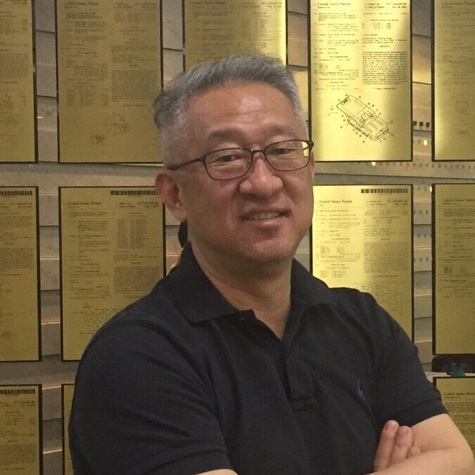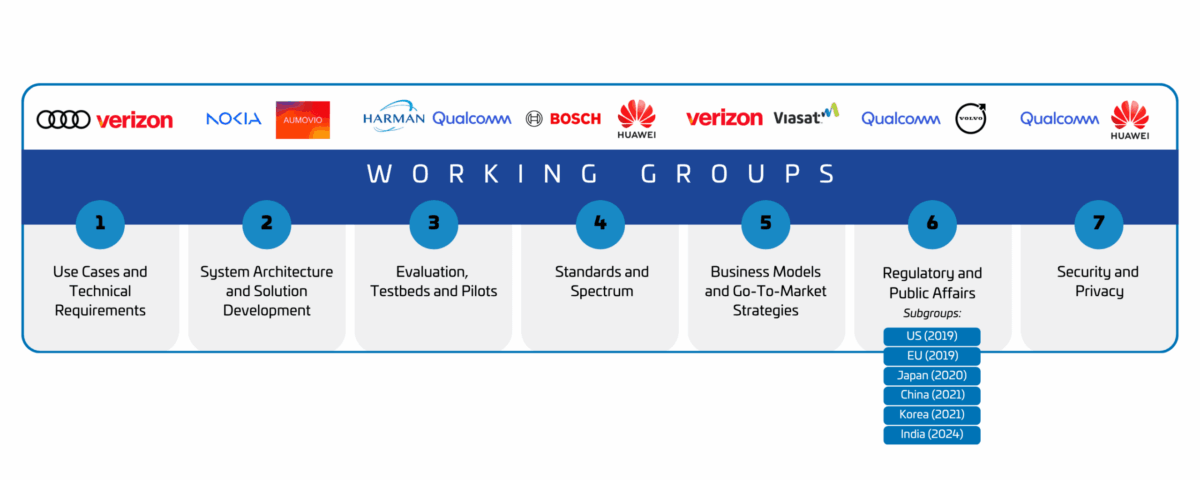Working Groups
Define end-to-end view on use cases and derive technical requirements and performance indicators for the certification of connected mobility solutions (e.g. on communication architecture, radio protocols, radio parameters, frequency spectra and carrier aggregation combinations). Ensure interoperability for V2X and other affected technologies.
 |
 |
| Julia Rainer (Audi) |
Mu He (Verizon) |
| Chair | Vice-chair |
Define, develop and recommend system architectures and interoperable end-to-end solutions to address use cases and Services of Interest. Reviewing currently available solutions in technical areas such as wireless air interface technologies, wireless network deployment models, radio access networks and networked clouds, connectivity and device management or security, privacy and authentication.
 |
 |
| Berthold Panzner (Nokia) |
Andreas Andrae (AUMOVIO) |
| Chair | Vice-chair |
Evaluate and validate end-to-end solutions through testbeds. Globally orchestrating and harmonising conformity and interoperability assessments to ensure that new C-V2X products conform to existing standards and are interoperable with each other. Manage regional interoperability event programmes in cooperation with regionally established organisations. Promote commercialisation and standardisation via pilots and large-scale trials by selecting the use cases in conjunction with go-to-market strategies. This includes multi-phase / multi-year planning with prioritisation.
 |
 |
| Jacob Harel (Harman) |
Ralf Weber (Qualcomm) |
| Chair | Vice-chair |
Act as ‘Industry Specification Group’, providing recommendations, contributions and positions to ETSI, 3GPP and other standards development organisations. Agree on spectrum requirements for V2X in ITS, MBB and unlicensed bands. Represent the association vis-à-vis other industry organisations.
 |
 |
| Khaled Shawky Hassan (Bosch) |
Reza Karimi (Huawei) |
| Chair | Vice-chair |
Agree on criteria for business models. Identify involved organisations and companies, and prioritise them. Draft exemplary go-to-market plan as straw man function for agreed use cases under test and business models. Agree on how to best achieve a global approach to certification of the target connected mobility solutions.
 |
 |
|
| Michael Salmon (Verizon) | Damian Lewis (Viasat) |
|
| Chair | Vice-chair |
Agree on common 5GAA positions in relation to policy and regulatory matters at a national, regional and (whenever possible) global level to secure market access, foster technology innovation and investment, and support commercial deployment, developing a common policy strategy among industry stakeholders, public authorities, and subject matter expert members.
 |
 |
| Anne-Lise Thieblemont (Qualcomm) |
Kristina Olausson (Volvo Cars) |
| Chair | Vice-chair |
WG6 – Europe sub-group:
 |
 |
| Anne-Lise Thieblemont (Qualcomm) |
Kristina Olausson (Volvo Cars) |
| Lead | Co-Lead |
WG6 – US sub-group:
 |
 |
| Brad Stertz (Audi) |
Andres Castrillon (Qualcomm) |
| Lead | Co-Lead |
WG6 – China sub-group:
 |
 |
|
| Li Zhao (CATT) |
Yinxiang Zheng (CMCC) |
|
| Lead | Co-Lead |
WG6 – Japan sub-group:
 |
 |
| Hiroki Shibayama (NTT Docomo) |
Masakazu Shirota (Qualcomm) |
| Co-Lead | Co-Lead |
WG6 – Korea sub-group:
 |
 |
| Heejin Kim (LG) |
Michael Park (Qualcomm) |
| Lead | Co-Lead |
WG6 – India sub-group:
 |
 |
| Divya Sachdeva (Ericsson) |
Nitin Sonar (Bosch) |
| Co-Lead | Co-Lead |
Review currently available solutions in relevant technical areas and identify gaps toward comprehensive secure end-to-end solutions and specifications for the use cases and services of interest as defined by the “Use Cases and Technical Requirements” WG.
 |
 |
| Virendra Kumar (Qualcomm) |
Ioannis Krontiris (Huawei) |
| Chair | Vice-chair |




